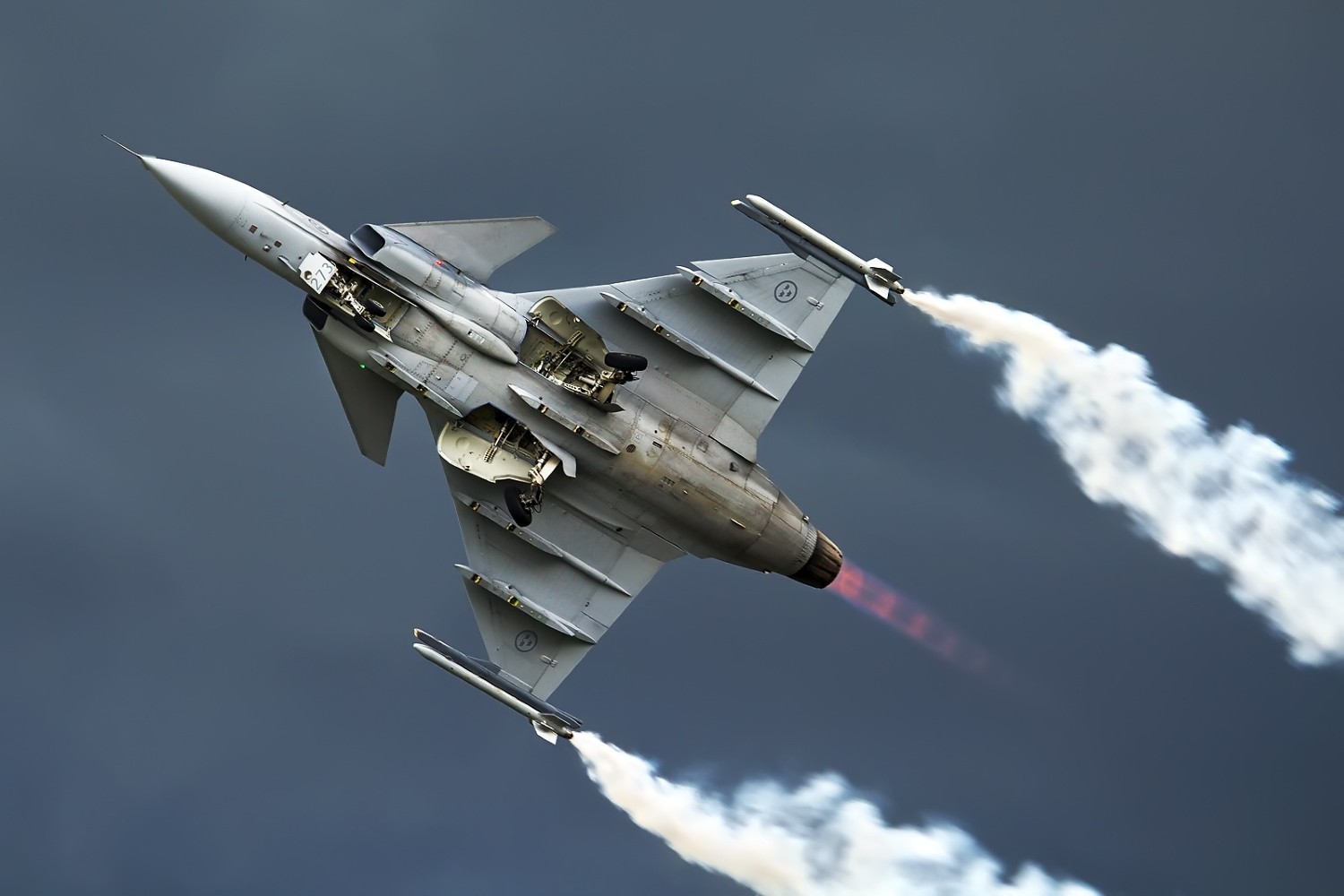Sweden has once again offered its Saab JAS 39 Gripen multirole fighter aircraft to the Philippine Air Force (PAF), responding to the PAF’s endeavors to modernize its existing fleet.
Stockholm offered its fighter jet as a compelling option for the Philippine Air Force’s (PAF) multirole fighter (MRF) acquisition project.
On August 14, Sweden’s Ambassador to Manila, Annika Thunborg, visited the Department of National Defense (DND) Secretary Gilberto Teodoro Jr. at the DND headquarters situated in Camp Aguinaldo, Quezon City, according to the Philippine News Agency.
Following that, on August 16, DND spokesperson Arsenio Andolong announced that in the context of enhancing the capability of the Armed Forces of the Philippines, Secretary Teodoro highlighted that any defense procurement undertaken by the Philippines must adhere to the principles of sustainability, interoperability, and supportability.
Andolong stated that Ambassador Thunborg, understanding the necessity for a modern Philippine Air Force (PAF), underlined Sweden’s offer of their flagship multirole fighter aircraft, the Saab JAS-39 ‘Gripen.’

In an official statement, the Department of National Defense (DND) also mentioned that foreseeing potential collaborations, the Swedish Ambassador suggested facilitating information exchange regarding the distinct financial systems of both nations.
Additionally, the Ambassador proposed discussing financing packages that Sweden could potentially provide.
The latest development takes place approximately two months after signing a defense Memorandum of Understanding (MoU) between the Philippines and Sweden.
The agreement can pave the way for integrating the Saab Gripen into the Philippine Air Force.
At the time, the Department of National Defense announced that the agreement creates possibilities for the involvement of Swedish defense sectors in the modernization scheme of the Philippine Armed Forces.
It also allows for potential collaborative projects in alignment with the Philippines’ drive to attain an independent defense stance.
Before this, a delegation headed by PAF chief Lt. Gen. Stephen Parreño visited Sweden from May 24 to May 28.
During their trip, they interacted with the Swedish Air Force and conducted a tour of the Saab facility, where they had the opportunity to inspect the JAS-39 and Saab 340 airborne early warning and control aircraft.
Gripen Vs. F-16
The specifications for the Multirole Fighter (MRF) project dictate that the offered aircraft must be at least of “fourth generation or higher” capability. The project’s parameters necessitate a minimum of 12 MRFs capable of patrolling the country’s protected waters and airspace.
Originally slated to be a component of Horizon 2 within the Armed Forces of the Philippines (AFP) Modernization Program spanning from 2018 to 2022, the MRF project faced delays in its implementation due to the repercussions of the Covid-19 pandemic.
Among the prime contenders for the Philippine Air Force’s (PAF) multirole fighter acquisition initiative, the JAS-39 is among the two leading choices.
The other contender is the US Lockheed Martin F-16V “Viper,” the latest iteration of the American-made aircraft that has found its way into numerous air forces globally.
Earlier, there were reports about the participation of India’s Tejas and the China-Pakistan jointly developed JF-17 Thunder in the Philippines’ multirole fighter jet (MRF) acquisition process. However, no official statements were released from any of the parties involved.
Nonetheless, in July 2022, the Philippine Air Force (PAF) officially announced that it had narrowed down its options to the F-16 and the Saab JAS 39 Gripen for the competition.
In 2021, the United States presented Manila with an offer for twelve new F-16 Block 70s, priced at around $2.43 billion.
However, this proposition was dismissed by former Philippine National Defense Secretary Delfin Lorenzana due to its perceived high cost, prompting the exploration of alternative options.
The chosen approach involved the acquisition of second-hand, modernized aircraft. On the other hand, Stockholm’s proposal revolves around a batch of Gripen C and D fighters, encompassing single-seat and two-seat variants.
These Gripen aircraft would be equipped with fifth-generation electronics, informally called the “C+” standard.
The Swedish-manufactured Gripen also boasts the advantage of requiring minimal personnel and ground support equipment for distributed operations. It is also capable of utilizing small unprepared roads as runways.
Meanwhile, Washington’s counteroffer revolves around the F-16 Block 50/52, which would undergo an upgrade to the Viper standard. This enhancement would position them at a technological level roughly equivalent to the F-16 Block 70.
Nonetheless, the Multirole Fighters (MRFs) are anticipated to complement the current fleet of 12 FA-50PH light jet fighters manufactured in South Korea.
- Contact the author at ashishmichel(at)gmail.com
- Follow EurAsian Times on Google News




